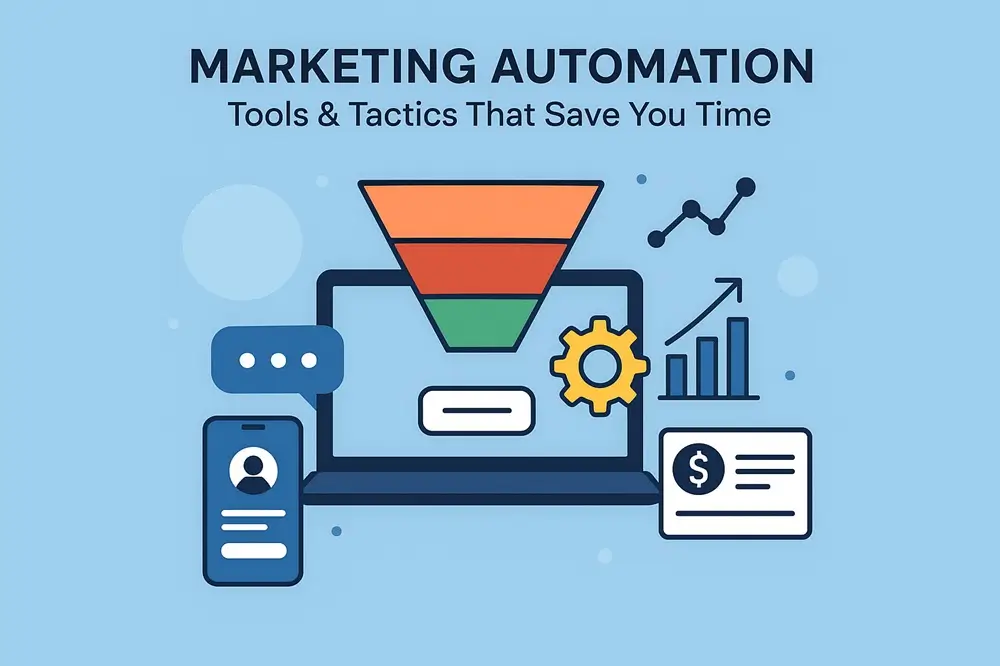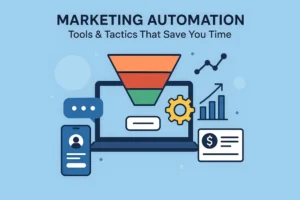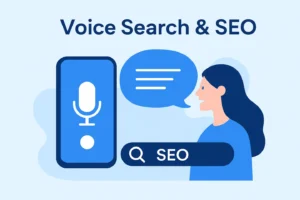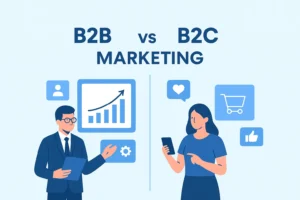Understanding the Power of Marketing Automation in 2025
Marketing automation has become a vital component of modern business growth, enabling brands to streamline repetitive tasks and enhance customer journeys with precision. In 2025, automation is no longer limited to email scheduling; it now includes audience segmentation, predictive analytics, behavior-based messaging, and cross-channel campaign execution. This evolution allows businesses to maintain consistent engagement without manually managing every step. Additionally, as competition intensifies online, automation offers a major advantage: the ability to scale personalized interactions efficiently. Companies integrating automation into their daily workflow improve productivity, reduce human error, and develop stronger relationships with their target audiences. Whether you’re optimizing funnels, improving customer retention, or nurturing leads, automation serves as the foundation that supports long-term success. Businesses adopting automation early position themselves ahead of competitors and maintain a sustainable, data-driven marketing ecosystem.
Table of Contents
Toggle
Schedule a Consultation Now
Key Components That Make Automation Effective Today
Marketing automation works best when built on strong foundational pillars such as customer data, segmentation, and behavioral triggers. Understanding what your audience wants—and when they want it—helps automation deliver messages that feel human and relevant. In 2025, user expectations for personalized content have risen significantly, and automation tools help businesses meet those expectations at scale. Platforms today allow you to track user behavior on websites, emails, and apps to deliver tailored experiences. Tools also provide advanced analytics for measuring campaign performance and audience engagement, making optimization seamless. Integrating automation into multiple touchpoints ensures your brand stays visible and consistent. This approach has become especially beneficial for tasks like lead scoring, onboarding sequences, and follow-up messages. Modern automation isn’t just about saving time—it’s about delivering smarter, better-timed interactions. These elements combined create a strategy that’s both efficient and customer-centric, improving long-term business profitability.
How Automation Enhances Funnel Performance and Conversions
Funnels are at the heart of most marketing strategies, and automation plays a huge role in improving each stage—from awareness to decision-making. Automated funnels ensure potential customers receive the right message at the right time, building trust and increasing conversions. Whether guiding leads through informative content, sending reminders, or offering promotions, automation eliminates the guesswork and creates predictable results. This is especially effective when integrated with systems related to Affiliate Marketing, ensuring partners and leads are nurtured with precision. Automated funnels also help track user drop-off points and optimize steps that need improvement. By analyzing behaviors, businesses can craft targeted experiences that drive prospects to take action. This creates a seamless journey where users feel understood, supported, and motivated to move forward. As a result, brands achieve higher conversion rates while reducing time spent on manual follow-ups and repetitive tasks.
Personalization Through Data-Driven Automated Campaigns
Personalization has become a standard expectation rather than a luxury. Marketing automation helps businesses build hyper-personalized experiences based on customer demographics, interests, and behavior. With access to real-time data, automation platforms can deliver content tailored to individual needs—whether product recommendations, helpful resources, or exclusive offers. This transformation allows brands to behave less like advertisers and more like trusted advisors. Integrating automation with robust systems such as Click Funnels enhances personalization by creating dynamic funnel paths that adjust automatically based on user interactions. These tailored experiences drive stronger emotional connections and higher engagement rates. Personalized messaging also reduces irrelevant communication, keeping audiences connected while avoiding fatigue. When executed correctly, personalized automation results in a smoother customer journey, increased lifetime value, and significantly improved customer satisfaction—all essential for maintaining a competitive edge in today’s digital landscape.
Automation’s Role in SEO and Organic Growth
Marketing automation indirectly boosts organic visibility by supporting tasks that enhance content performance, technical optimization, and user experience. Automated SEO tools can track keyword rankings, perform site audits, identify broken links, and monitor competitors—activities that typically consume large amounts of time. With automated workflows, businesses can maintain content calendars, schedule posts, and analyze traffic behavior without manual intervention. This structured approach ensures consistent output and data-driven decision-making. Tools integrated with SEO functions also help track search intent and user engagement patterns, allowing marketers to refine their strategies. When automation and SEO work together, they create a powerful system that strengthens long-term visibility. It ensures your brand stays updated with search engine trends and produces content aligned with audience expectations. Ultimately, automation allows marketers to spend more time creating quality content and less time handling repetitive technical tasks.
Social Media Automation for Consistent Brand Visibility
Social platforms require constant activity, but managing multiple profiles manually can be time-consuming and inconsistent. Social media automation solves this challenge by scheduling content, managing engagement, and analyzing performance across platforms. Businesses can pre-plan posts weeks in advance, maintain consistent branding, and ensure posting frequency without daily effort. Additionally, automated tools track engagement metrics such as clicks, comments, and shares, allowing brands to refine their strategies. Automation becomes especially valuable when aligning posts with campaigns, launches, or seasonal promotions. Integrating automation with Social Media strategies ensures your content stays visible even when you’re not online. This approach boosts reach, fosters community interaction, and enhances brand awareness. As algorithms favor consistent and engaging content, automation becomes essential for staying competitive. With the right system, businesses achieve both efficiency and creativity in their social media presence.
Integrating Automation With Website and Design Systems
Your website plays a crucial role in marketing automation, acting as the central hub where data is collected and user journeys begin. Modern automation tools integrate seamlessly with CMS platforms, analytics dashboards, and CRM systems to create unified workflows. Tracking visitor behavior, form submissions, page interactions, and purchase patterns becomes easier when your systems are interconnected. This integration helps businesses build better segmentation, event-triggered campaigns, and personalized journeys. Using automation alongside systems like advanced design platforms ensures a smooth, high-performing user experience. Automated pop-ups, email triggers, and content recommendations help guide users naturally through your site. As digital habits evolve, automation-driven websites provide a frictionless experience that leads to higher engagement and stronger conversion paths. For long-term growth, integrating automation with strong design and development practices is essential for a fully optimized marketing ecosystem.
How Automation Strengthens Lead Nurturing and Customer Retention
Lead nurturing is one of the most powerful applications of marketing automation. Instead of sending generic messages, businesses can deliver thoughtful, timely communication that addresses user needs at each stage. Automated nurturing sequences educate, inform, and guide prospects until they’re ready to convert. This approach builds trust, reduces customer hesitation, and increases revenue. Automation also significantly improves retention by sending renewal reminders, follow-up messages, and loyalty offers. For example, connecting automation with CRM systems ensures customers receive personalized support and exclusive content based on their history. When executed properly, automation feels natural and supportive rather than intrusive. It strengthens relationships and keeps your brand top of mind. As competition grows, businesses that prioritize automated nurturing will consistently outperform those relying solely on manual outreach. Retention-driven automation ultimately reduces costs while maximizing long-term customer value.
Let's Build Your Dream Website

Conclusion: Automation Is the Future of Smart Marketing
Marketing automation has become more than a productivity tool—it’s now the backbone of modern digital strategy. From personalized messaging to advanced funnel optimization, it ensures businesses stay relevant, efficient, and competitive. Whether integrating advanced tools or connecting automation with platforms like Affiliate Marketing, Click Funnels, SEO, or Social Media, the possibilities continue to expand. As technology advances, automation empowers brands to build meaningful customer relationships while optimizing internal workflows. Companies that invest now will be far better positioned for the future, enjoying stronger brand loyalty, improved performance, and scalable growth. The era of manual marketing is fading, and automation is opening doors to smarter, more impactful communication. By adopting these strategies today, businesses can create long-lasting, data-driven systems that fuel sustainable success.





